Overclocking Further?
We've had mixed experiences with Phenom CPUs to date - our original 9600 Black Edition coughed and spluttered at anything over 200MHz more than its rated speed, but the 9650 Black Edition and 8750 that use the latest B3 stepping cores were far liberal in the overclocking margins.Armed with this Phenom X4 9850, Phenom X3 8750 and an Athlon 64 X2 5000+ (65nm Brisbane core), our previous overclocks we achieved with the Asus 790FX and SB600 were:
- 2.88GHz from the Phenom X4 9850 Black Edition
- 3.0GHz from the Phenom X3 8750
- 3.0GHz from the Athlon 64 X2 5000+

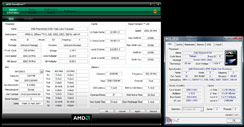
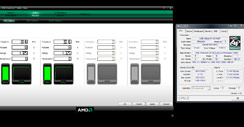
The 9850, 8750 and 5000+ overclocks on the 790FX with SB600 southbridge. Click to enlarge
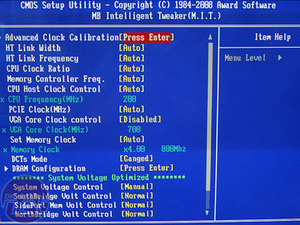

The new Advanced Clock Calibration options in the Gigabyte BIOS. Click to enlarge.
Gigabyte recommend setting it to +2 percent for Phenom X4 9850 and 9950, +4 percent for the original B2 stepping 9600 and +6 percent in "extreme cases".
Weapons of choice:
- Gigabyte GA-MA790GP-DS4H (AMD 790GX, SB750)
- AMD Phenom X4 9850 Black Edition
- AMD Phenom X3 8750
- AMD Athlon X2 5000+ (65nm Brisbane core)
- 2GB OCZ FlexXLC PC2-9200
- Zalamn CNPS9500 CPU cooler
The Gigabyte board has another problem - we found that while it does offer the Advanced Clock Calibration options thanks to the new SB750 southbridge, there was only control for the northbridge multiplier within the HyperTransport frequency that wasn't too straight forward and required keeping an eye on in CPU-Z. This was an important factor as we overclocked the Phenom X4 8750 that uses a locked multiplier and requires increasing the HyperTransport frequency alone.
While AMD's OverDrive has come leaps and bounds since we first looked at it, it's still not quite as uniform as we'd like: again the support was better with the 9850 Black Edition, but when we came to overclock the 8750 in OverDrive the CPU voltage overhead was very limited and there was no option to change the northbridge multiplier, limiting our overclock in Windows.
Stable speeds we achieved while overclocking on the 790GX and SB750 were:
- 3.2GHz (16x200MHz HTT) with the Phenom X4 9850 Black Edition - a 400MHz extra overclock
- 3.2GHz (12x280MHz HTT) with the Phenom X3 8750 - a 200MHz greater overclock, although the Asus 790FX/SB600 board was able to boot at 3.3GHz and record a screenshot, but the Gigabyte 790GX/SB750 was unable to get into Windows at 3.3GHz (12x275MHz HTT)
- 3.12GHz with the Athlon 64 X2 5000+ Energy Efficient - a 100MHz greater overclock.
As it stands, the overclocking is improved and it looks like Gigabyte's GA-MA79GP-DS4H we used is certainly a promising choice. The Asus M3A32 MVP Deluxe motherboard is eight months old now, and although it has the latest BIOS on it which in some respects should be better than Gigabyte's early BIOS.
However the benefit of having more time in core board design on a chipset that's largely the same as the 780G and with a new southbridge that's pin-compatible with the older SB600, both can lead to optimisations elsewhere by squeezing that little bit more out of a current system. It will be interesting to see the true(r) difference from enthusiast boards based on the 790FX and SB750 southbridge when they come available very soon.
Oh, and one last thing: always make sure when you try a new heatsink it isn't concave in the middle.

Check back soon for a full review of the Gigabyte GA-MA790GP-DS4H.

MSI MPG Velox 100R Chassis Review
October 14 2021 | 15:04


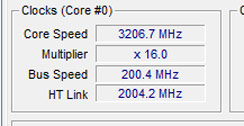
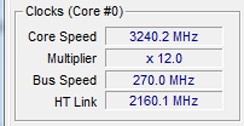
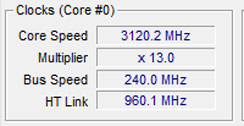







Want to comment? Please log in.